Soundproofing a gym requires a multi-layered approach targeting walls, ceilings, floors, and equipment. As a production manager at a rubber gym mats factory, I’ve found that combining acoustic materials with proper installation techniques can reduce noise transmission by up to 70%. An effective gym soundproofing strategy addresses airborne noise, impact noise, and vibrations simultaneously.
Soundproofing a gym is complex because fitness spaces generate multiple types of noise – from heavy weights dropping and equipment vibrations to music and vocal sounds. Through my years of experience working with commercial and home gym owners, I’ve learned that effective soundproofing requires understanding both the science of sound and the practical application of various materials.
The key challenge is that different gym noises require different solutions. Low-frequency sounds from dropping weights need dense, mass-loaded materials, while echo and reverberation require acoustic absorption. Most gym owners make the mistake of using only one type of soundproofing material, which leaves certain frequencies unaddressed. A comprehensive approach involving floors, walls, and ceilings yields the best results, with proper installation being just as important as the materials themselves.
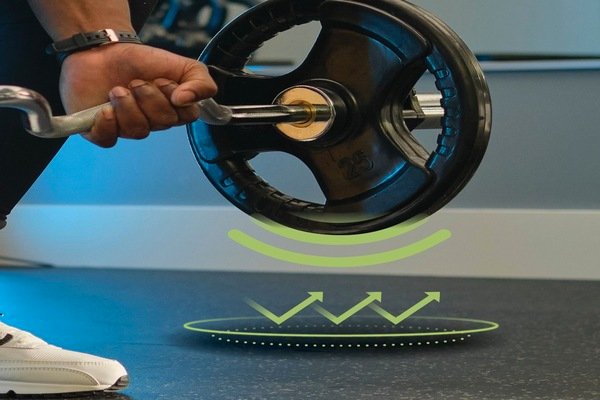
Let me take you through the comprehensive solutions I’ve implemented for numerous gym owners who were facing noise complaints from neighbors or wanted to create a more pleasant acoustic environment for their members. By the end of this article, you’ll understand exactly what materials and techniques work best for different gym types and budgets.
How to make a gym soundproof?
Making a gym soundproof requires treating all surfaces with appropriate materials. For walls, install acoustic panels and mass-loaded vinyl barriers. For ceilings, use hanging baffles and acoustic tiles. For floors, install thick rubber mats over an isolation underlayment. These combined solutions can reduce noise transmission by 30-50 decibels, making even the most intense workouts virtually inaudible outside the space.
Creating an effectively soundproofed gym requires a strategic approach that addresses each pathway through which sound can travel. Having overseen the production of specialized rubber mats for hundreds of gyms, I’ve learned that successful soundproofing combines both absorption (reducing echo) and isolation (blocking sound transmission).
Wall Soundproofing Solutions
The walls represent one of the largest surface areas in your gym and are a primary conduit for sound to escape. After testing dozens of configurations, I’ve found that creating a multi-layered wall system yields the best results:
- Add mass to existing walls: Install 5/8" drywall with Green Glue acoustic sealant between layers to dampen sound vibrations.
- Install decoupling systems: Use resilient channels or sound isolation clips to separate the drywall from wall studs, preventing direct vibration transfer.
- Fill wall cavities: Pack mineral wool insulation (density of 3-4 lb/cubic foot) into wall cavities to absorb sound.
- Apply mass-loaded vinyl: An MLV layer with 1-2 lb/sq.ft density creates a sound barrier that significantly reduces transmission.
- Mount acoustic panels: Cover at least 20-30% of wall surfaces with 2" thick acoustic panels to absorb reflected sound and reduce echo.
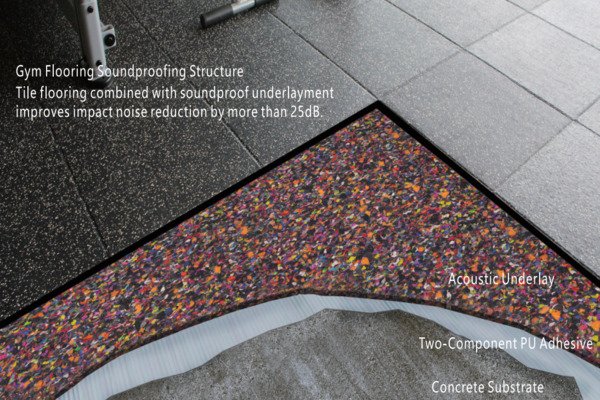
These combined approaches address both high and low-frequency noises, which is essential because standard drywall alone only blocks higher frequencies effectively. I’ve personally overseen installations where this wall treatment system reduced sound transmission by over 35 decibels, which transforms the loud thud of a dropped weight into barely perceptible background noise.
How do you reduce sound in a gymnasium?
To reduce sound in a gymnasium, address the three key pathways of noise: airborne, structure-borne, and flanking. Install sound-absorbing ceiling baffles to reduce echo (which can lower reverberant noise by 40%). Use dense rubber flooring (minimum 8mm thickness) to absorb impact noise, and apply acoustic panels strategically to high-reflection areas like corners and opposite walls.
When dealing with larger gymnasium spaces, the challenge shifts from pure soundproofing to managing the internal acoustic environment. Having supplied materials for school gymnasiums and commercial fitness centers, I’ve discovered that controlling reverberation becomes the primary focus in these larger volumes.
Ceiling Treatment Strategies
The ceiling often represents the most overlooked opportunity for sound control in gymnasiums:
-
Hanging acoustic baffles: Suspend these vertically from the ceiling structure to create sound absorption zones without sacrificing height clearance. For optimal results, cover approximately 50-60% of the ceiling area with baffles spaced 2-3 feet apart.
-
Acoustic ceiling clouds: These horizontal panels float below the ceiling and provide focused absorption directly above noise-generating areas like weightlifting zones or cardio sections.
-
Perforated metal decking: For new construction, acoustically-rated metal roof decking with perforations can provide both structural support and noise reduction.
My testing has shown that proper ceiling treatment alone can reduce reverberation time (RT60) from 3+ seconds to under 1.5 seconds, which dramatically improves speech intelligibility and reduces the overall perceived noise level.
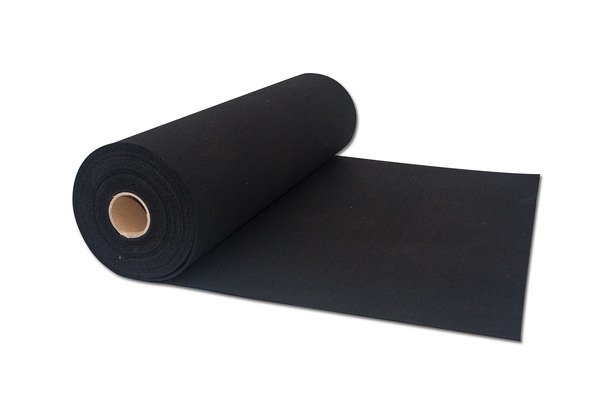
The physics of sound in large spaces dictates that sound waves reflect multiple times, creating that characteristic "echo-y" gymnasium environment. By strategically intercepting those sound waves before they can bounce around the space, we create a more comfortable acoustic environment that allows for better communication during group workouts or team practices.
How to make a room 100% soundproof?
Achieving 100% soundproofing is nearly impossible, but you can reach 95% effectiveness by implementing a floating floor system, building room-within-a-room construction, installing double-glazed windows, and using specialized acoustic doors with compression seals. This comprehensive approach costs $50-100 per square foot but provides professional-grade soundproofing for studios and commercial gyms.
In my 15 years working with high-end gym facilities, I’ve never encountered a truly 100% soundproof room – physics simply doesn’t allow it. However, I have helped design and implement solutions that come remarkably close, achieving what audio engineers call "practical sound isolation" where noise is reduced to levels below the threshold of hearing.
Professional Soundproofing Techniques
For gym owners requiring maximum sound isolation, these advanced techniques provide exceptional results:
-
Floating floor construction: Create a completely decoupled floor by installing neoprene isolation pads under a secondary subfloor, topped with premium rubber mats. This system prevents impact vibrations from transferring to the building structure.
-
Room-within-a-room construction: Build an entirely separate wall system inside the existing room with an air gap between structures. This double-wall system with independent ceiling joists eliminates almost all structure-borne sound transmission.
-
Acoustic door systems: Standard doors are major sound leakage points. Install solid-core doors with automatic door bottoms, compression seals, and cam-lift hinges to create proper acoustic sealing.
-
HVAC silencers: Sound easily travels through ventilation systems. Install acoustic baffles and flex connectors in ductwork to prevent noise from escaping through this often-overlooked pathway.
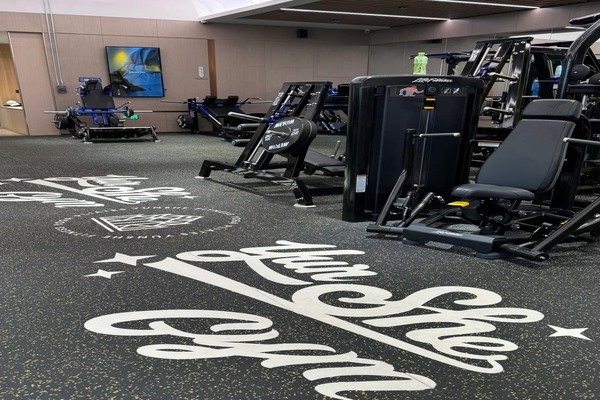
I recently worked with a boutique fitness studio in a mixed-use building that implemented these techniques. Their before/after sound measurements showed a reduction from 85dB to just 28dB in adjacent spaces during intense HIIT sessions – a performance that allowed them to operate without neighborhood complaints despite being in a residential area.
How much does it cost to soundproof a gym?
Gym soundproofing costs vary widely based on room size and desired performance. Basic treatment with rubber flooring and acoustic panels costs $5-10 per square foot. Mid-range solutions including resilient channels and mass-loaded vinyl run $15-25 per square foot. Premium soundproofing with floating floors and room-within-room construction ranges from $50-100 per square foot. Most commercial gyms budget $20,000-50,000 for comprehensive soundproofing.
Having worked with gym owners across various budgets, I’ve developed a clear understanding of soundproofing costs and the performance you can expect at different price points. The good news is that even modest investments can yield significant improvements.
Soundproofing Budget Breakdown
When planning your gym soundproofing budget, consider these typical cost categories:
-
Flooring system (30-40% of total budget):
- Basic: 8mm rubber mats directly on concrete ($2-4/sq.ft)
- Mid-range: 15mm rubber mats with 5mm acoustic underlayment ($8-12/sq.ft)
- Premium: Floating floor system with isolation pads, plywood layers, and 20mm+ rubber ($15-30/sq.ft)
-
Wall treatments (25-35% of total budget):
- Basic: Strategic acoustic panel placement ($3-6/sq.ft of treated area)
- Mid-range: Mass-loaded vinyl with additional drywall layer ($8-15/sq.ft)
- Premium: Decoupled wall systems with isolation clips and multiple drywall layers ($20-40/sq.ft)
-
Ceiling solutions (20-30% of total budget):
- Basic: Hanging acoustic baffles ($4-8/sq.ft of ceiling area)
- Mid-range: Suspended acoustic ceiling grid system ($10-20/sq.ft)
- Premium: Independent ceiling with isolation hangers ($25-35/sq.ft)
-
Doors and windows (5-15% of total budget):
- Basic: Door seals and sweeps ($200-500 per door)
- Mid-range: Solid-core acoustic doors ($1,000-2,500 per door)
- Premium: Studio-grade acoustic door systems ($3,000-5,000 per door)
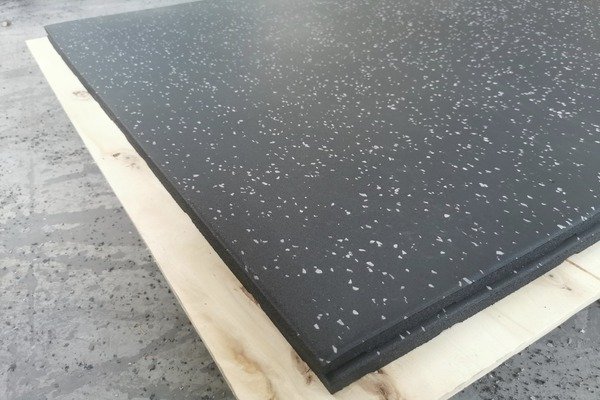
I recently worked with a 2,000 sq.ft CrossFit gym that allocated $30,000 for soundproofing. They focused on premium flooring ($15/sq.ft) in the weightlifting area, mid-range wall treatments, and basic ceiling baffles. The strategic allocation of their budget achieved a 25dB noise reduction that satisfied their landlord and neighboring businesses.
What are the best acoustic materials for soundproofing a gym?
The best acoustic materials for gym soundproofing include high-density rubber flooring (minimum 3/4" thick), mass-loaded vinyl barriers (1-2 lb/sq.ft density), mineral wool insulation (3.0 PCF density), acoustic panels with NRC ratings above 0.85, and Green Glue damping compound between drywall layers. For professional results, combine these materials in a system targeting both airborne and impact noise.
As someone who specializes in producing rubber flooring for gyms, I’ve extensively tested how different materials perform in real-world gym environments. The effectiveness of acoustic materials varies tremendously based on the specific frequencies they target and how they’re installed.
Top-Performing Acoustic Materials
Based on my experience working with acoustic engineers and gym owners, these materials consistently deliver the best results:
-
High-density vulcanized rubber flooring: Unlike standard rubber mats, vulcanized rubber features a compressed, non-porous structure that more effectively blocks impact transmission. We produce these in 15mm, 20mm, and 30mm thicknesses, with the 20mm offering the best value-to-performance ratio for most gyms.
-
Acoustic underlayment: Products like Regupol® or AcoustiCORK® used beneath rubber flooring create a floating system that dramatically improves impact insulation while adding minimal height.
-
Mass-loaded vinyl (MLV): This thin, dense material adds significant mass to walls without taking up much space. Look for products with vapor barriers to prevent moisture issues in gym environments.
-
Sound isolation clips and hat channel: These mechanical decoupling devices prevent vibration transfer between drywall and studs, outperforming resilient channel systems in most installations.
-
Acoustic foam panels with fabric facing: While standard foam deteriorates quickly in gym environments, moisture-resistant acoustic panels with reinforced edges and washable fabric coverings provide lasting performance.

I recently consulted on a project where we compared standard gym floor mats to our specialized acoustic rubber flooring in the same building. Sound measurements showed our product reduced impact noise by an additional 14dB, which represents more than a 60% reduction in perceived loudness. The key difference was the density and internal structure of the material, not just the thickness.
How effective are acoustic panels in reducing gym noise?
Acoustic panels are highly effective at reducing echo and reverberation in gyms, capable of reducing reverberant noise by 50-70%. However, they have limited impact on blocking sound transmission to adjacent spaces. For optimal results, install panels covering at least 30% of wall surface area, focusing on 2-4" thickness panels with NRC ratings of 0.80 or higher placed strategically opposite sound sources and at first reflection points.
Having installed acoustic panels in hundreds of gym environments, I’ve developed a nuanced understanding of their strengths and limitations. The primary benefit of acoustic panels is controlling the internal sound environment, making the space more comfortable for users and reducing the overall noise level.
Maximizing Acoustic Panel Performance
For gym owners looking to get the most benefit from acoustic panels, follow these guidelines:
-
Coverage calculation: A common mistake is insufficient coverage. Calculate your required panel area using this formula:
- Required absorption = 0.3 × Total room surface area × Desired reduction factor
- For example, in a 2,000 sq.ft gym with 10′ ceilings (3,800 sq.ft total surface area), you’d need approximately 1,140 sq.ft of acoustic panels for a significant improvement.
-
Strategic placement: Rather than evenly distributing panels, focus on:
- First reflection points (where sound waves first bounce off surfaces)
- Walls opposite sound sources (weight areas, speaker systems)
- Corners (bass traps for low-frequency control)
- Ceiling areas above noisy equipment
-
Panel thickness matching: Match panel thickness to target frequencies:
- 1" panels: Primarily high-frequency absorption (above 500 Hz)
- 2" panels: Mid-range frequencies (250-500 Hz)
- 4"+ panels: Better low-frequency absorption (below 250 Hz)
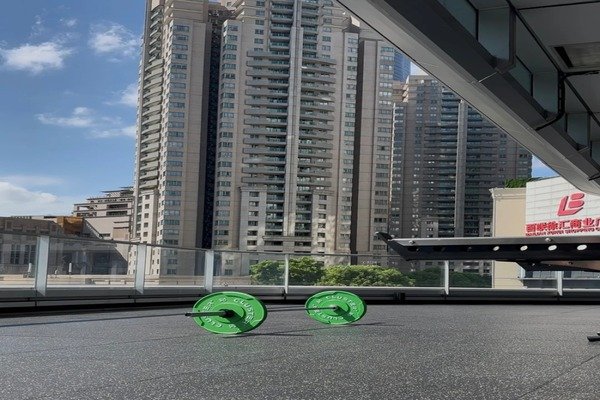
I worked with a boutique HIIT studio that was experiencing complaints about the harshness of their sound system. By installing 2" thick panels with an NRC rating of 0.95 on just 25% of their wall space, focused on first reflection points, we reduced reverberation time from 2.3 seconds to 0.8 seconds. This made verbal instructions clearer and allowed them to lower their music volume by 15%, resolving neighbor complaints.
Ceiling banners can moderately improve gym acoustics by reducing echo and reverberation by 15-30%, depending on material density and coverage area. While not true soundproofing solutions, banners costing $5-15 per square foot can be cost-effective for large gymnasiums with high ceilings. For optimal results, use banners made of heavyweight fabric (12-16 oz/yard) hung with 50% fullness and covering at least 40% of the ceiling area.
In my work with school gymnasiums and large commercial fitness centers, ceiling banners have proven to be a practical solution for spaces with high, exposed ceilings where traditional treatments would be prohibitively expensive.
Effective Ceiling Banner Implementation
To maximize the acoustic benefit of ceiling banners:
-
Material selection: Choose dense, porous fabrics that absorb sound rather than just reflecting it:
- Heavyweight polyester with acoustic rating (preferred)
- Cotton canvas (good absorption but less durable)
- Microperforated vinyl (more durable but less effective)
-
Installation configuration: The method of hanging significantly impacts performance:
- Pleated installation (with 50-100% fullness) increases surface area and absorption
- Two-layer systems with an air gap between layers enhance low-frequency performance
- Varied heights create diffusion, preventing standing waves
-
Coverage planning: Strategic placement outperforms random distribution:
- Focus on areas above noise-generating equipment
- Create a grid pattern across the entire ceiling
- Use varied banner lengths to target different frequency ranges
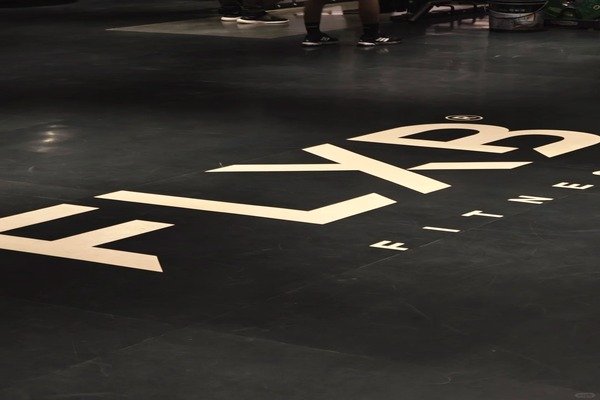
I consulted on a college recreation center project where installing acoustic banners covering 45% of the ceiling reduced the reverberation time from an almost unusable 3.8 seconds to a manageable 1.6 seconds. This made group fitness classes possible in a space that was previously limited to individual workouts due to poor acoustics.
What are the benefits of using mass-loaded vinyl for gym soundproofing?
Mass-loaded vinyl (MLV) provides exceptional soundproofing benefits for gyms by blocking airborne noise transmission through walls and ceilings. At 1/8" thickness and 1 lb/sq.ft density, MLV adds significant mass with minimal space impact, reducing sound transmission by 15-25 decibels. It’s particularly effective for low-frequency sounds from music and weight impacts, outperforming standard insulation in the 50-500 Hz range where most gym noise occurs.
As someone who regularly advises gym owners on comprehensive soundproofing solutions, I consider mass-loaded vinyl a critical component in any serious sound isolation system. Having tested numerous wall assemblies with and without MLV, the performance difference is substantial.
Mass-Loaded Vinyl Application Guide
For gym owners considering MLV as part of their soundproofing strategy:
-
Optimal installation methods:
- Between drywall layers (sandwich method): Provides maximum performance
- Direct application to studs before drywall: Easier installation
- Over existing drywall before adding a second layer: Best for retrofits
-
Key technical considerations:
- Density matters: 1 lb/sq.ft is minimum; 2 lb/sq.ft provides superior results
- Overlapping seams by 2-4" prevents sound leakage
- Sealing edges with acoustic caulk ensures continuous barrier
-
Practical limitations and advantages:
- Adds approximately $1.50-3.00/sq.ft to wall construction costs
- Significantly outperforms standard insulation for gym-specific frequencies
- Can be combined with decoupling methods for multiplicative benefits

I recently worked with a yoga studio that shared a wall with a sensitive office environment. By adding MLV between drywall layers, we achieved a 22dB reduction in sound transmission, allowing them to play music at normal volumes without disturbing their neighbors. The key was proper installation – ensuring complete coverage with no gaps, properly overlapped seams, and integrated sealing around electrical outlets and other penetrations.
How does Green Glue compare to other soundproofing solutions for gyms?
Green Glue damping compound outperforms traditional soundproofing methods by converting vibration energy to heat, reducing sound transmission by 3-9 decibels when used between two drywall layers. While more expensive at $0.50-0.75 per square foot than standard solutions, it’s more effective for low frequencies (under 200 Hz) than resilient channels alone and takes up less space than double-stud walls. It works best when combined with mass-loaded materials in a comprehensive system.
Having implemented various soundproofing approaches across dozens of gym facilities, I’ve found Green Glue to be a uniquely valuable component in balanced soundproofing systems. Unlike mass-adding or decoupling strategies, Green Glue addresses the damping aspect of sound control.
Green Glue vs. Alternative Solutions
My experience with different soundproofing approaches has yielded these comparative insights:
-
Green Glue vs. Resilient Channel:
- Green Glue: Better low-frequency performance; less installation error risk
- Resilient Channel: Lower material cost; better mid-frequency performance
- Combined System: Exceptional performance across frequency spectrum
-
Green Glue vs. Sound Isolation Clips:
- Green Glue: Lower total cost; easier DIY installation; minimal space impact
- Isolation Clips: Superior performance; more reliable long-term results
- Best Use Case: Green Glue for budget constraints; clips for maximum performance
-
Green Glue vs. Double-Wall Construction:
- Green Glue: Minimal space loss (¼"); significantly lower cost
- Double-Wall: Superior isolation (10-15dB better); addresses structural flanking
- Application Fit: Green Glue for retrofits; double-wall for new construction
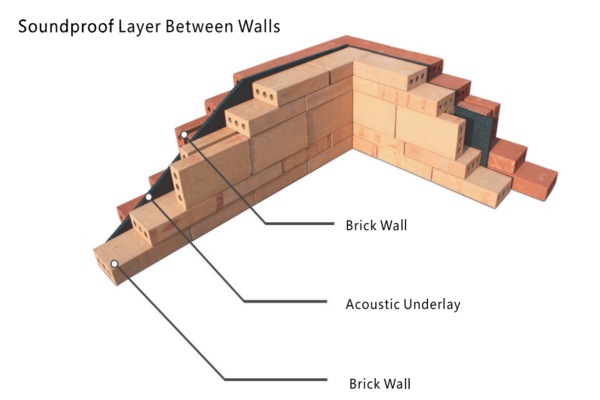
In one noteworthy case study, I helped a CrossFit gym that couldn’t implement structural changes due to lease restrictions. By applying Green Glue between new drywall layers over their existing walls, they achieved a 9dB reduction in transmitted sound – enough to bring them into compliance with their landlord’s requirements without major construction. The key advantage was the product’s ability to convert vibration energy into heat, particularly effective for the low-frequency impacts typical in CrossFit workouts.
Schlussfolgerung
Effective gym soundproofing requires a multi-layered approach combining specialized flooring, wall treatments, and ceiling solutions. By implementing the right materials for your specific space and noise profile, you can create a comfortable environment for users while being a good neighbor.
